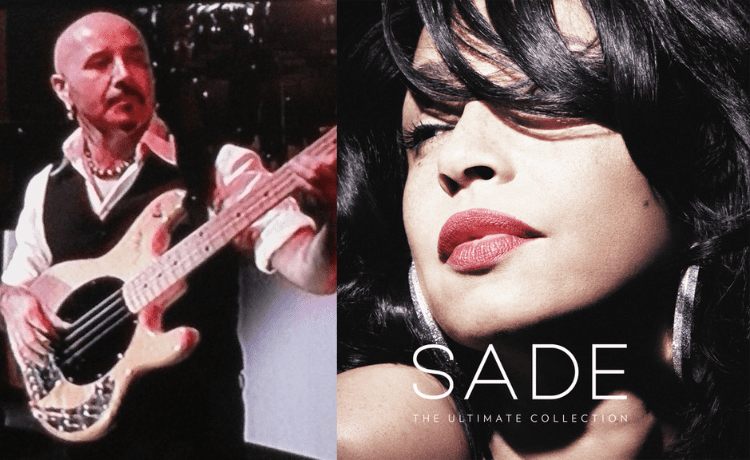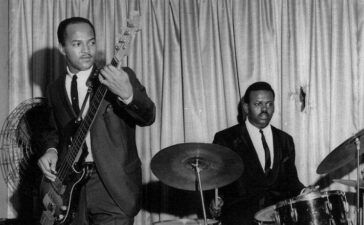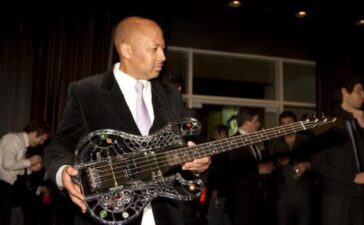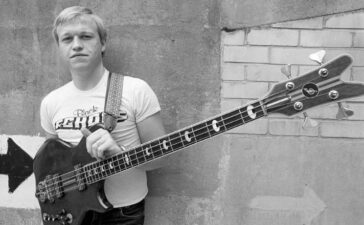The song “The Sweetest Taboo,” released in 1985 as part of Sade’s second studio album, Promise, is a perfect example of how simplicity and elegance can combine to create an immersive listening experience. A crucial part of that allure comes from the bass line, played by the talented bassist Paul S. Denman. In a musical landscape where sophistication often resides in subtlety, Denman’s performance of “The Sweetest Taboo” stands out as a model of minimalist yet deeply expressive groove.
Get access to the TABS for the song “Sade – The Sweetest Taboo“
The Bass Line Conception
The song begins with a soft percussion intro, soon joined by Paul S. Denman’s bass. From the first notes, the bassline sets the tone for the song—somewhere between sensual and contemplative. Denman adopts an approach that blends harmonic and rhythmic economy, leaving enough space for Sade Adu’s silky voice to shine.
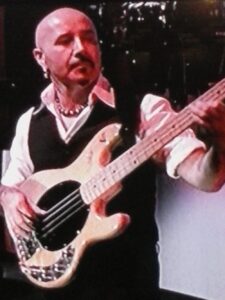
Denman’s groove is based on a repetitive, hypnotic phrase that revolves around the song’s main key, which is ( F#m ). His note selection is careful, with a focus on the fundamentals and a few passing notes that add melodic richness without overwhelming the song. He uses a palm muting technique to slightly dampen the strings, producing a warm, percussive sound that is both clear and engaging.
Get access to the TABS for the song “Sade – The Sweetest Taboo“
Bass Line Structure and Movement
The bassline in “The Sweetest Taboo” is relatively simple, but its effectiveness comes from that simplicity. Denman explores tension and release through a chord progression that emphasizes root notes and fifth and octave intervals, creating a solid foundation for the song’s harmony.
During the verse, the bass follows a pattern that respects the song’s smooth beat. Denman keeps the focus on the root note, while adding some subtle rhythmic and melodic variations to avoid rote repetition. These variations are small, but they make a significant difference, creating a sense of continuous movement without breaking the song’s relaxing mood.
In the chorus, the bass becomes a little more assertive, but without ever losing its characteristic smoothness. Here, Denman takes the opportunity to use more slides and brief accents on passing notes that guide the harmonic progression in a fluid way, almost like an internal dialogue with Sade’s vocal melody. The use of “ghost notes” — notes played lightly, almost inaudible, that serve to add rhythm and texture — is also a hallmark of his performance, keeping the pulse of the song alive, without distracting from the central focus: the voice.
Interaction with Percussion and Other Instruments
The relationship between Denman’s bass and the drums, played by Dave Early, is one of the most notable features of “The Sweetest Taboo.” The drums, with their bossa nova beat, create a rhythmic pattern that is both smooth and dynamic. Denman responds to this with precision, using his bass not only as a harmonic support, but also as a rhythmic element. This interplay creates a continuous and hypnotic groove that sustains the song from beginning to end.
The bassline, however, doesn’t just follow the drum beat; it also complements the other instruments — especially the keyboard and guitar. There’s a constant back and forth between the bass and the chords played on the keyboard, which helps create a rich but never intrusive harmonic bed. The guitar, meanwhile, adds pops of color with its clean, jazzy phrasing, while Denman’s bass keeps everything cohesive, ensuring that each element has its place within the mix.
The Technique and Sound of Paul S. Denman
Paul S. Denman’s style is marked by precise control of timbre and dynamics. He uses a Fender Precision Bass, known for its full, clear sound, which is ideal for the kind of sound Sade was looking for: something intimate yet present. Denman adjusts the EQ on his bass to highlight the midrange and bass frequencies, but without losing definition in the high notes, which contributes to the song’s distinctive sound.
The aforementioned palm muting technique not only reduces the sustain of the notes, but also gives the bass a drier, more percussive sound that fits perfectly with the atmosphere of the song. Denman is meticulous in his execution, avoiding overdoing it and keeping the groove in check. His technical precision and impeccable timing make the bass line almost a natural extension of the musical arrangement.
Conclusion: The Art of Silent Groove
Paul S. Denman, with his bass line on “The Sweetest Taboo,” teaches us that the true power of bass in music lies not just in technical complexity or speed of execution, but in the precise choice of each note, the intention behind each stroke, and the ability to connect with the soul of the music. His work is a reminder that groove is ultimately about soul and feeling, and that music is as much about what is not played as what is played. On “The Sweetest Taboo,” Denman creates a bass line that is both an anchor and a breeze, sustaining the song with a smooth and unforgettable touch.



